26 June 2025
The Belfries Route
Explore the Belfries Route in Hauts-de-France from Dunkirk, Lille, Douai, Cambrai. Discover architectural treasures listed as UNESCO World Heritage Sites.
Cover photo: Village of Septmonts, Aisne, Hauts-de-France © Shutterstock /Alexandra.ROSA
The Hauts-de-France region is home to an exceptional concentration of belfries, many of which are listed as UNESCO World Heritage Sites. These stone towers, symbols of feudal power in the Middle Ages, shaped civic life alongside churches, amid both conflict and faith. Unique to northern Europe (found only in France and Belgium), they are easily recognised by their soaring silhouettes, chimes, clocks, watchtowers, archive rooms, spires, and weather vanes.
On the Belfries Route: Dunkirk
This city in northern France is fortunate to have two belfries in its centre. The Saint-Éloi Belfry, standing 58 metres tall, offers a 360-degree view of the entire city, the port, and Dunkirk beach. The Town Hall Belfry, at 75 metres high, is only open to the public during special events such as the European Heritage Days and National Architecture Days.
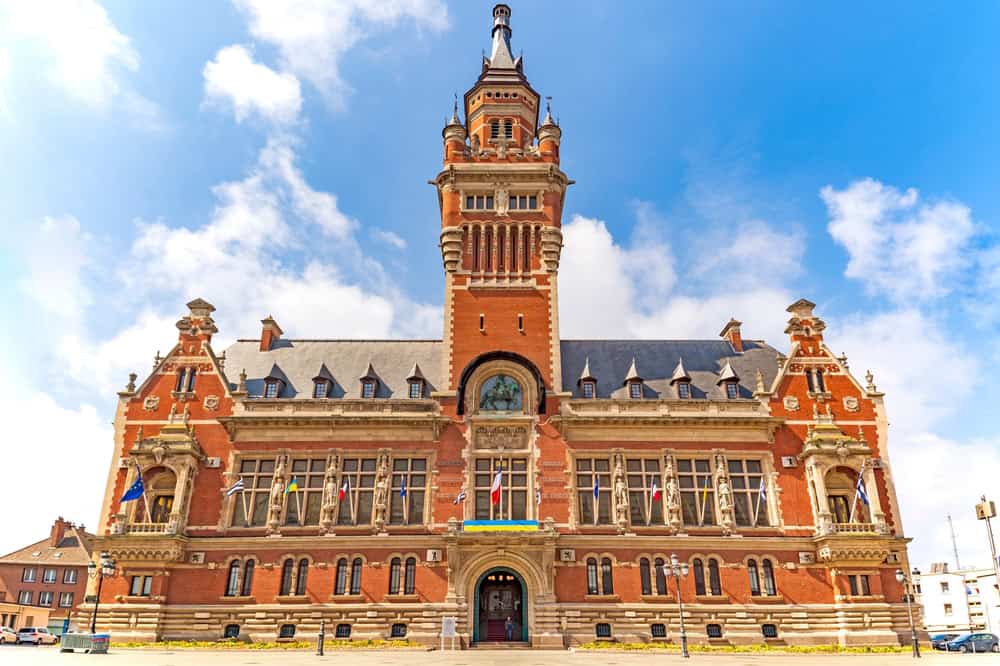
Next to it, the Town Hall, a Flemish Renaissance-style building, blends beautifully with its red and white brick façade. Inside, the base of the belfry is illuminated by a large stained-glass window depicting the triumphant return of the famous Dunkirk privateer Jean Bart after his victory at the Battle of Texel in 1694.
On the Belfries Route: Lille
In the “Capital of Flanders“, in the historic centre and just a stone’s throw from the Town Hall, the Lille Belfry stands as a tribute to the spirit of the Roaring Twenties. To discover the city, there’s no better way than climbing its 109 steps to enjoy a panoramic view from 104 metres above the ground.
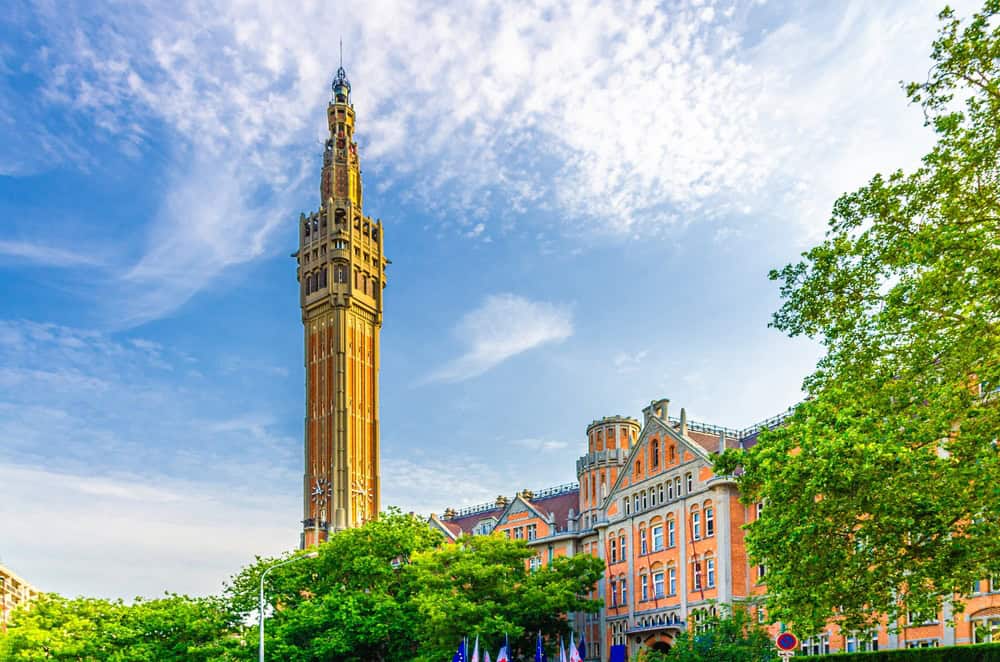
Representing nature, climbing plants, blossoming flowers, dragonfly wings, Art Nouveau was an artistic movement that flourished in France between 1890 and 1920, with a simple ambition: to break the rigid codes of classical art and re-enchant everyday life. Straight lines and strict symmetry gave way to curves, volutes, and arabesques, as if everything in the universe were meant to flow and undulate. This style transformed streets, houses, furniture, glass, ironwork, typography, posters, and even everyday objects into living, elegant, almost magical works of art.
On the Belfries Route: Armentières
In the town of Armentières, about twenty kilometres from Lille, stands the Belfry of Armentières, rising 67 metres above the Flanders hills. A symbol of municipal power, the belfry was originally a medieval tower, used at different times as a prison, a watchtower, and even a wartime target. It was burned down, rebuilt, dynamited, and finally resurrected in Flemish Renaissance style, before being elevated to the status of UNESCO World Heritage Site.
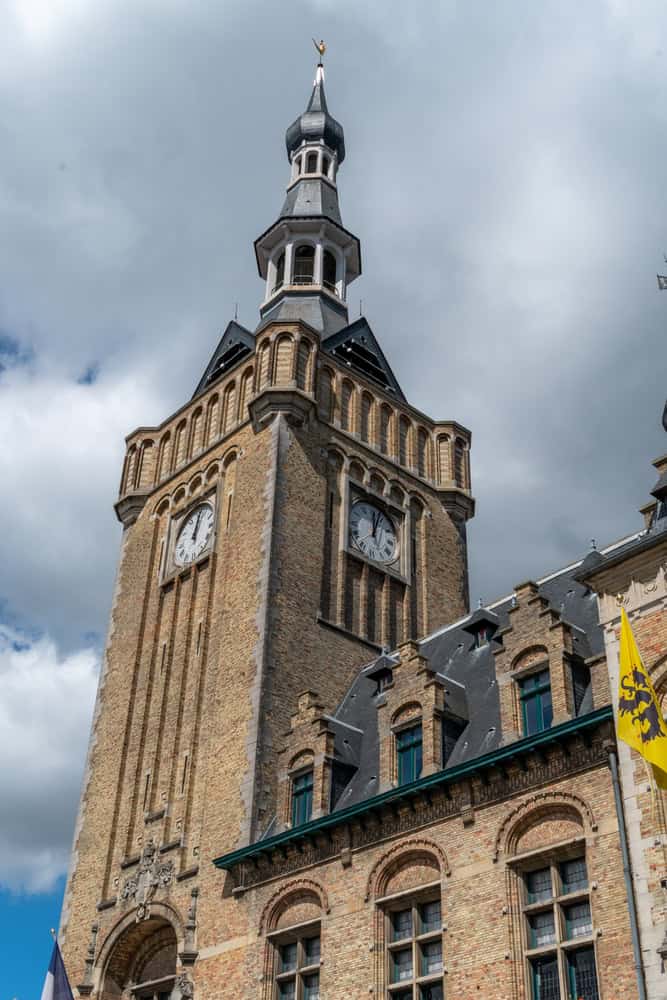
Above the town of Armentières stands the Belfry of Bailleul, named after the town itself. This 62-metre-high Flemish neo-Renaissance brick tower, with its 200 steps, has overlooked the Flanders hills since its reconstruction following the bombings of 1918.
On the Belfries Route: Bergues
With its 206 steps, bright white Flemish-style stone, and a playful nod to the atmosphere of Welcome to the Sticks, the Bergues Belfry takes you to new heights, both literally and culturally.
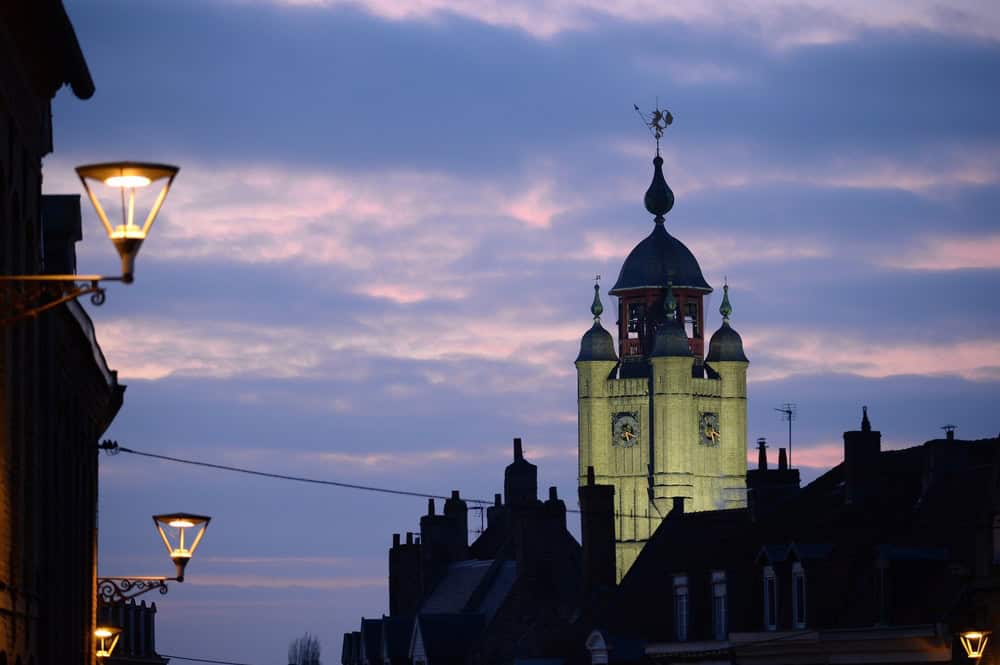
Like many belfries, it has been invaded, damaged by war, destroyed, and rebuilt. Listed as a UNESCO World Heritage Site since 2005, it is regarded by locals as one of the most beautiful belfries in northern France, rivaling even those of our Belgian neighbours.
On the Belfries Route: Douai
The Belfry of Douai, often called “the most beautiful of all” (and not just by the locals!), has been listed as a UNESCO World Heritage Site since 2005. With its 54 golden suns and authentic 14th- and 15th-century architecture, it never fails to charm passers-by.
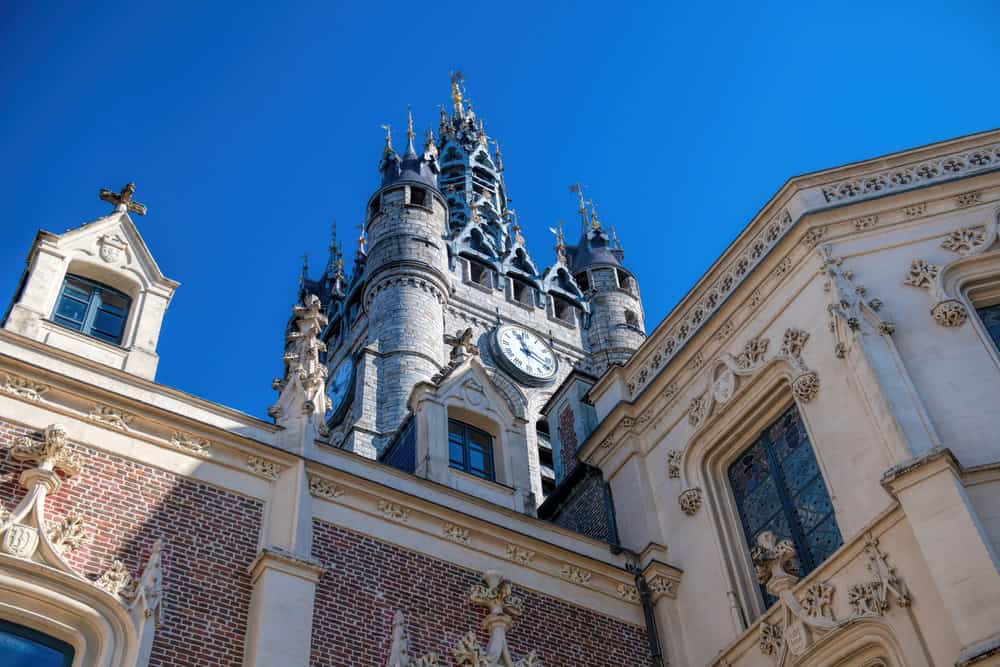
Belfries are renowned for their chimes, but the one in Douai is unique, it has earned the town its nickname: “the town of chimes.” So take a moment to slow down and listen as the bells ring out along your Belfries Route.
On the Belfries Route: Cambrai
Since the 11th century, the Belfry of Cambrai has stood in harmony with the Gothic bell tower of Saint-Martin Church. Until the 18th century, it had a different appearance, with a distinctive twisted spire flanked by four turrets. In 1736, the spire was replaced by a dome topped with a lantern, and in 1924, four sculptures representing the city’s history, created by Marcel Gaumont, were added.
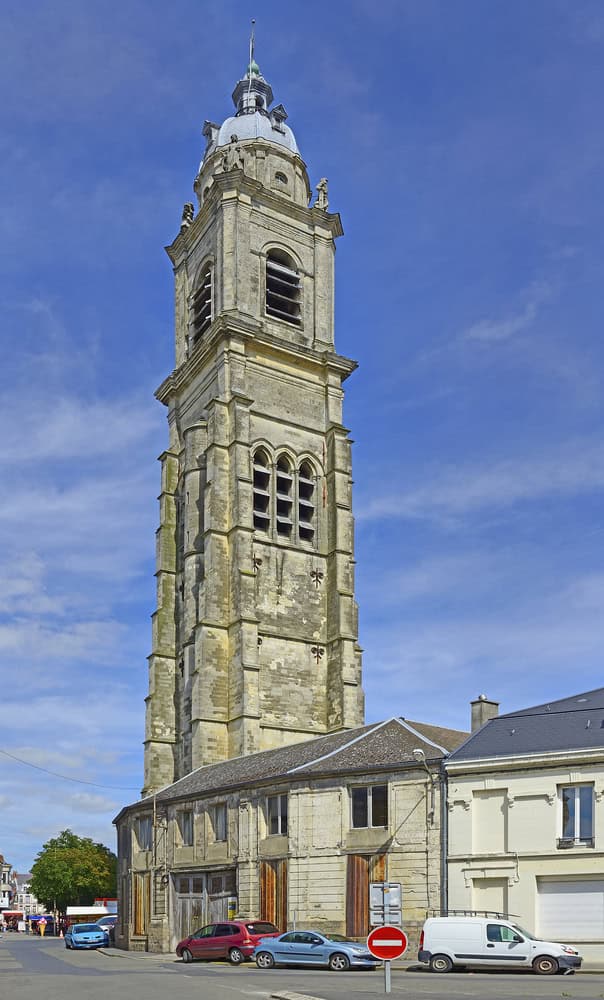
In the Middle Ages, this belfry was used by the gallus, who rang the bell to mark the hours of day and night, signal curfews, or warn of attacks and fires.
On the Belfries Route: Comines
The Belfry of Comines was rebuilt in the Flemish Renaissance style when the Town Hall was inaugurated in 1929. Regional architect Louis Marie Cordonnier unified the two structures through the use of red bricks.
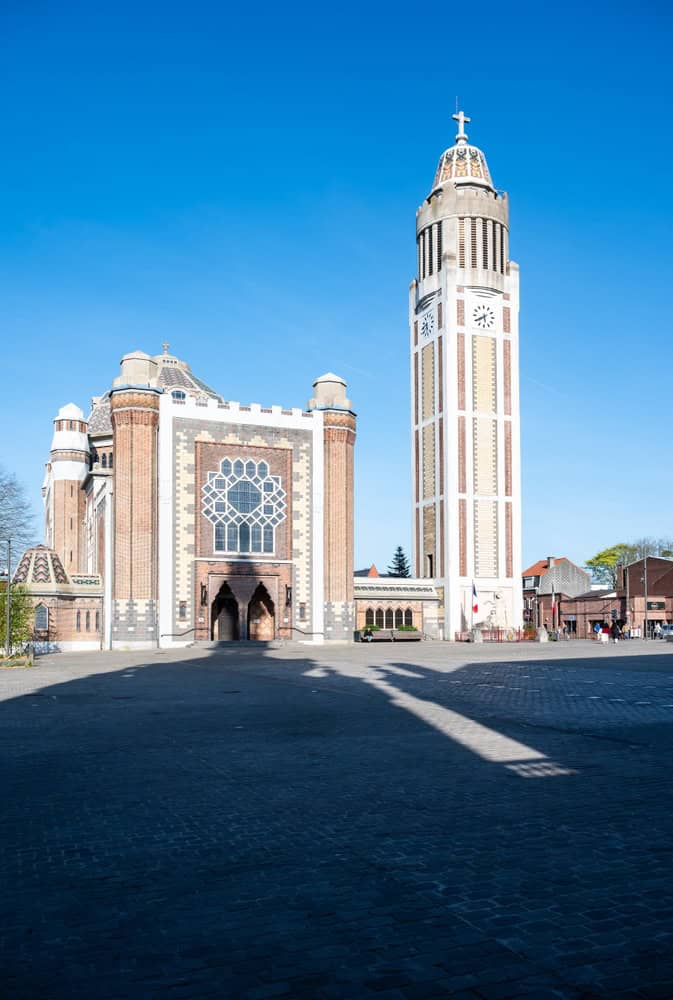
The Town Hall was added to the supplementary list of Historic Monuments in 2001, and its belfry was recognised as a UNESCO World Heritage Site in 2005.
On the Belfries Route: Gravelines
The Belfry of Gravelines, listed as a UNESCO World Heritage Site, stands 27 metres tall and offers exceptional views of the town, its fishing boats, and the surrounding landscape.

This architectural masterpiece can be explored during the Fortified Sites Weekend, on Heritage Days, and throughout the summer season.
On the Belfries Route: Loos
The Belfry of Loos, listed as a UNESCO World Heritage Site, embodies the unique blend of architectural styles found in northern France, combining neo-Flemish influences from Flanders and Holland. This fortified keep, with its turrets and machicolations, is built of red glazed brick and stands 38 metres tall, crowned by a bell tower and spire.
This Belfry Route reveals the full history of northern France: each belfry stands as a sentinel of time, rising proudly between heaven and earth, bearing witness to the rich heritage of the Hauts-de-France region. Climbing their steps is an invitation to rediscover the pride of a region shaped by culture, architecture, and memory.
Don’t leave empty-handed! Visit our gift shop to extend the experience, or share it by offering gifts and experiences to others. You can also sign up for our newsletter to receive our stories and news each month. Ready to set off on the Belfry Route? Join our loyalty programme and turn your visits into exclusive benefits at all Teritoria establishments. Because history isn’t just something to admire… it’s something to experience.
By Émilie FALLOT NGUYEN